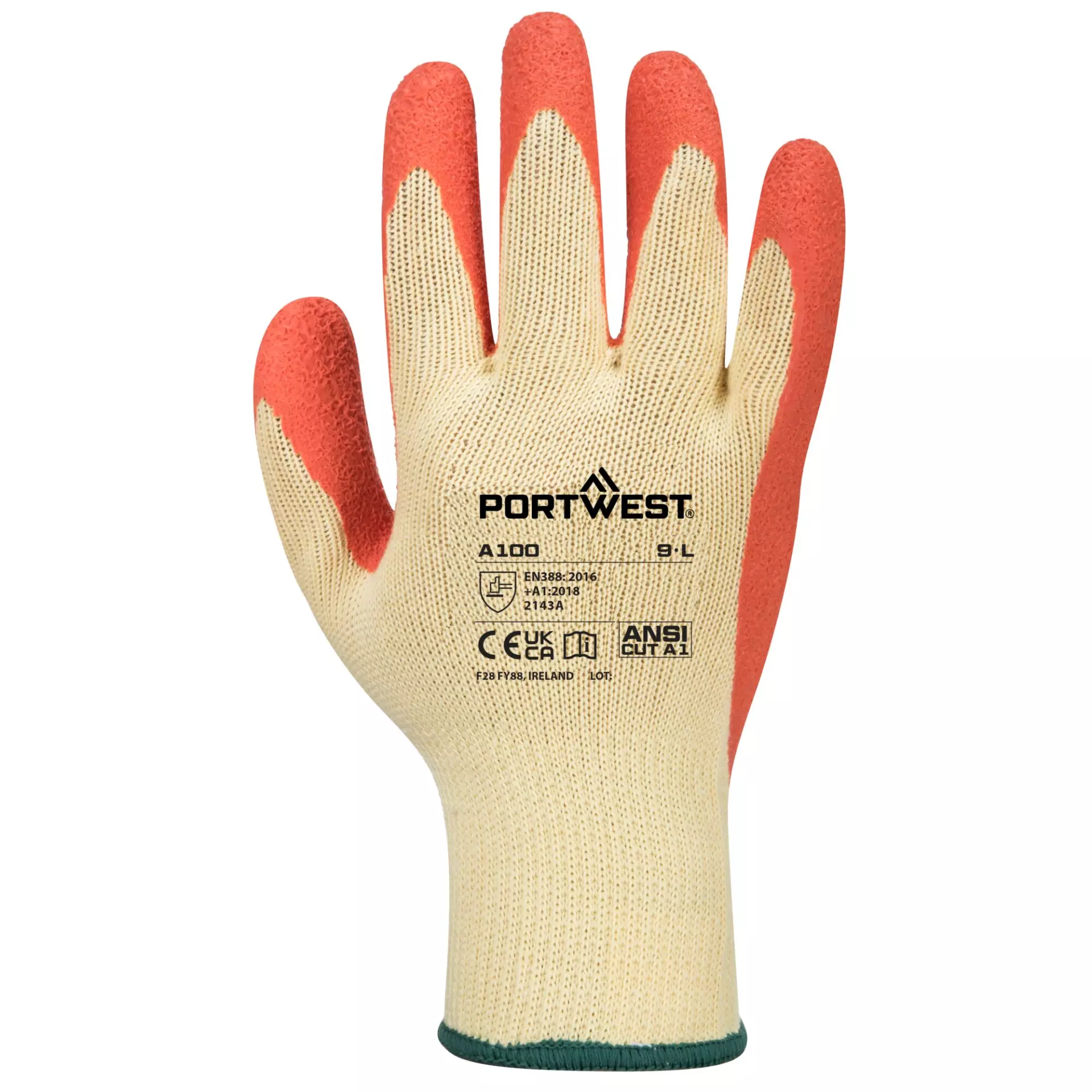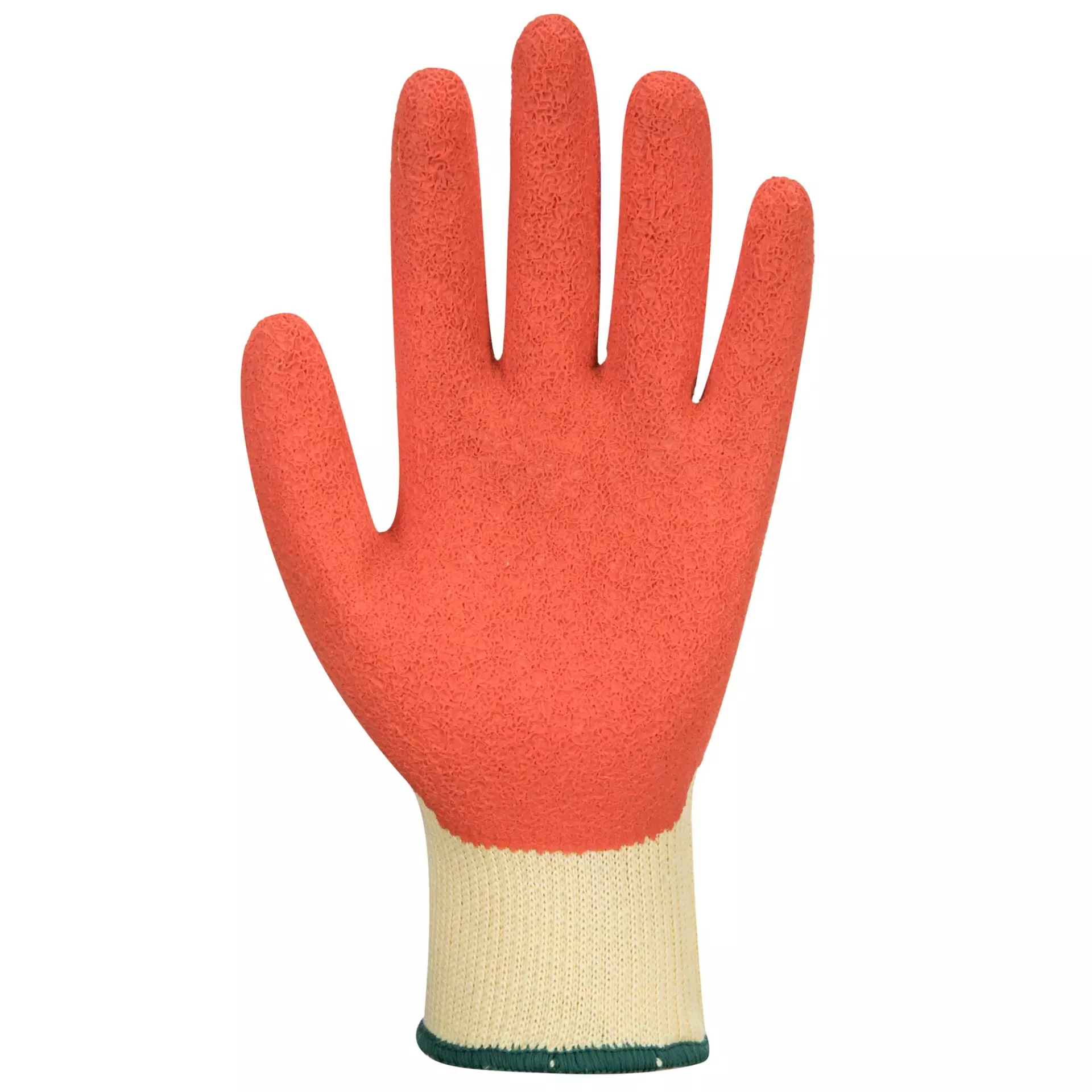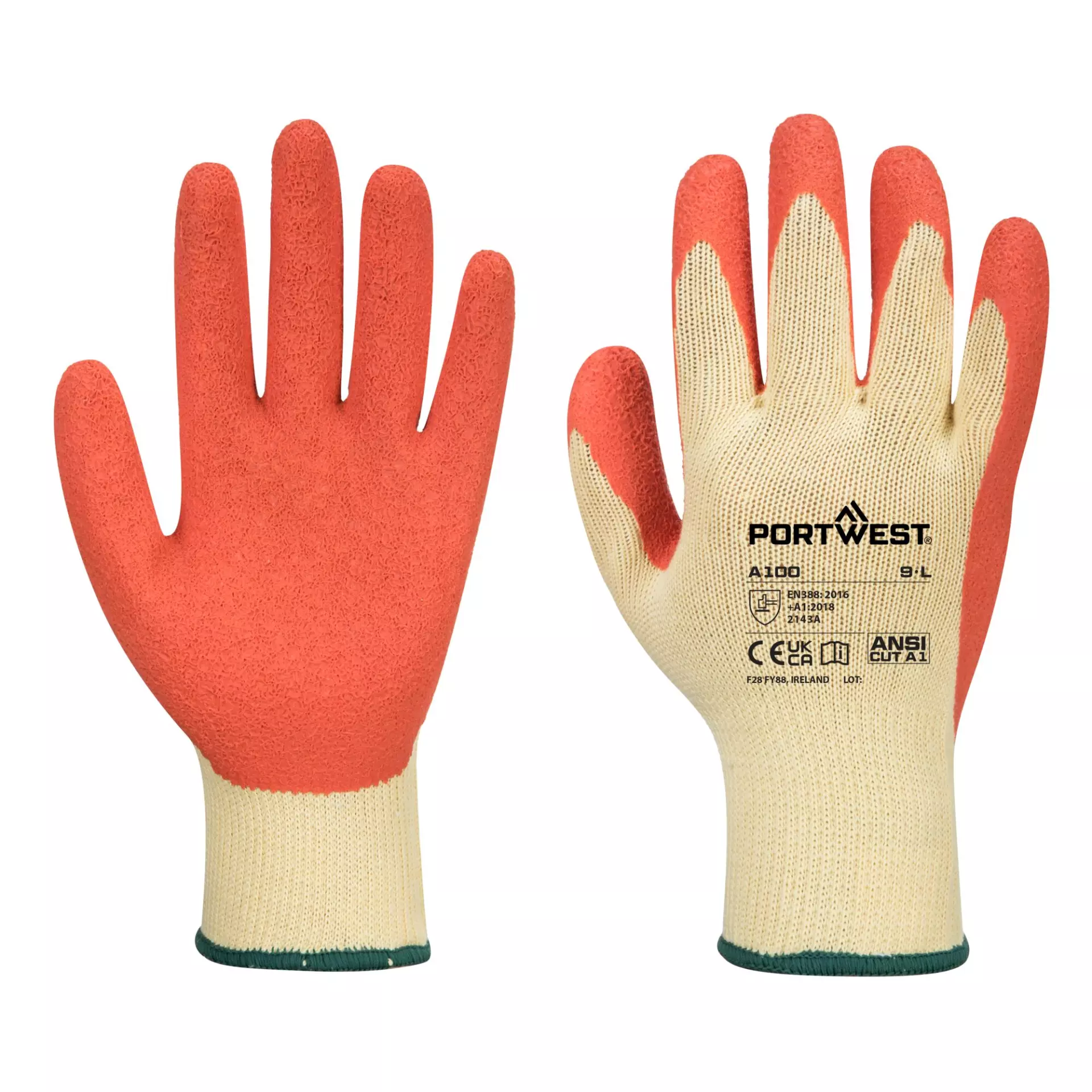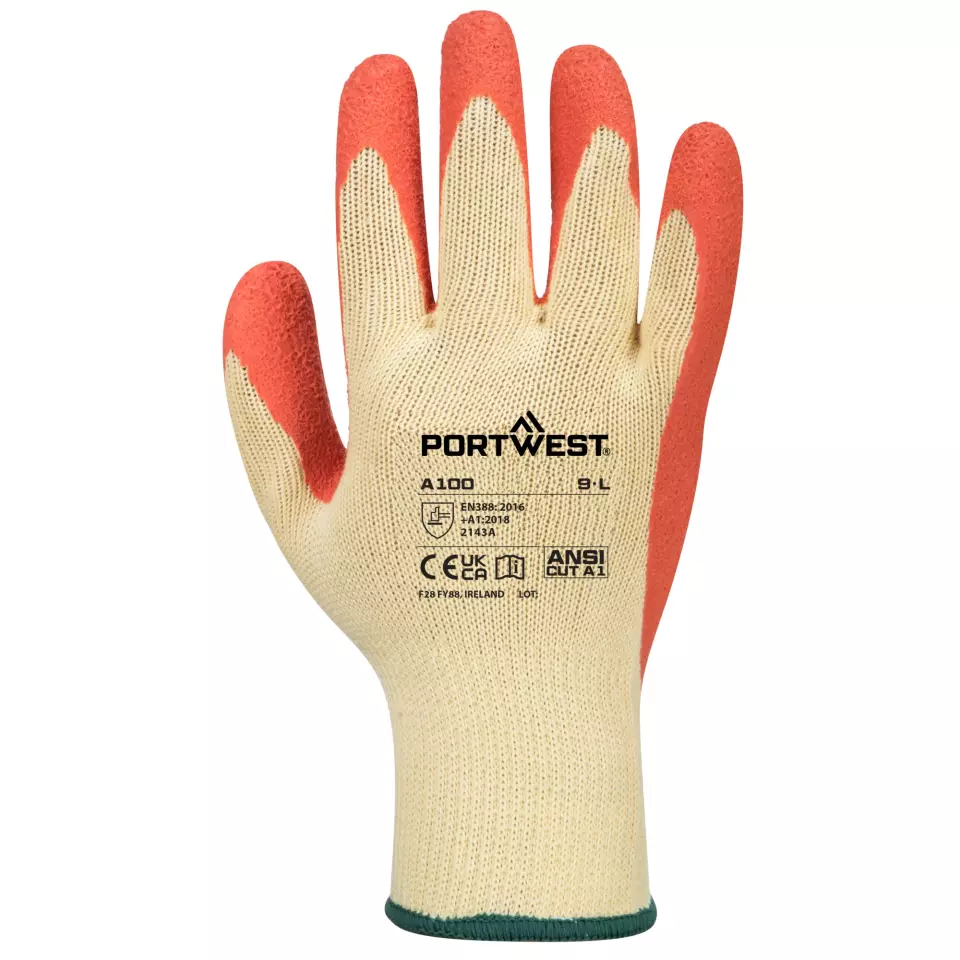


Features You'll Love

Coating Material · Foam, Latex
Palm Material · Latex, Foam

EN 388 · Abrasion Resistance Level 2, Cut Resistance, ISO 13997 Level A
Withstands moderate rubbing and friction, offering good protection for tasks involving handling rough materials.
Protects against low cut risks with minimal force, suitable for general purpose handling.
Portwest
Grip Glove - Latex, Orange, 12 pairs
Grip Glove - Latex, Orange, 12 pairs
5 / 5
34,38 €
Price per 12 pairs
2,86 € / pair
Choose size
Shipping fee is 7,95 € for orders under 80,00 €
Features You'll Love

Coating Material · Foam, Latex
Palm Material · Latex, Foam

EN 388 · Abrasion Resistance Level 2, Cut Resistance, ISO 13997 Level A
Withstands moderate rubbing and friction, offering good protection for tasks involving handling rough materials.
Protects against low cut risks with minimal force, suitable for general purpose handling.
Product description
Premium quality latex palm dipped work glove featuring a 10 gauge construction for enhanced durability and performance. The crinkle latex coating provides excellent grip in both wet and dry conditions, while the open back design ensures optimal ventilation and reduces hand fatigue. This CE certified glove meets EN 388:2016+A1:2018 standards with a 2143A rating and achieves dexterity level 4 according to EN ISO 21420:2020.
Product Features:
- Premium quality latex palm dipped coating
- Crinkle latex grip for secure handling
- Ergonomic design to reduce hand fatigue
- Open back for ventilation and breathability
- Breathable seamless liner
Technical Details:
- 10 gauge liner construction
- Latex natural rubber coating with high elasticity
- Polyester liner material for enhanced durability
- Good tear and abrasion resistance
- CE certified (2777/14699-02/E00-00, SATRA Technology Europe Ltd)
Standards:
- EN ISO 21420:2020 Dexterity 4
- EN 388:2016+A1:2018 (2143A)